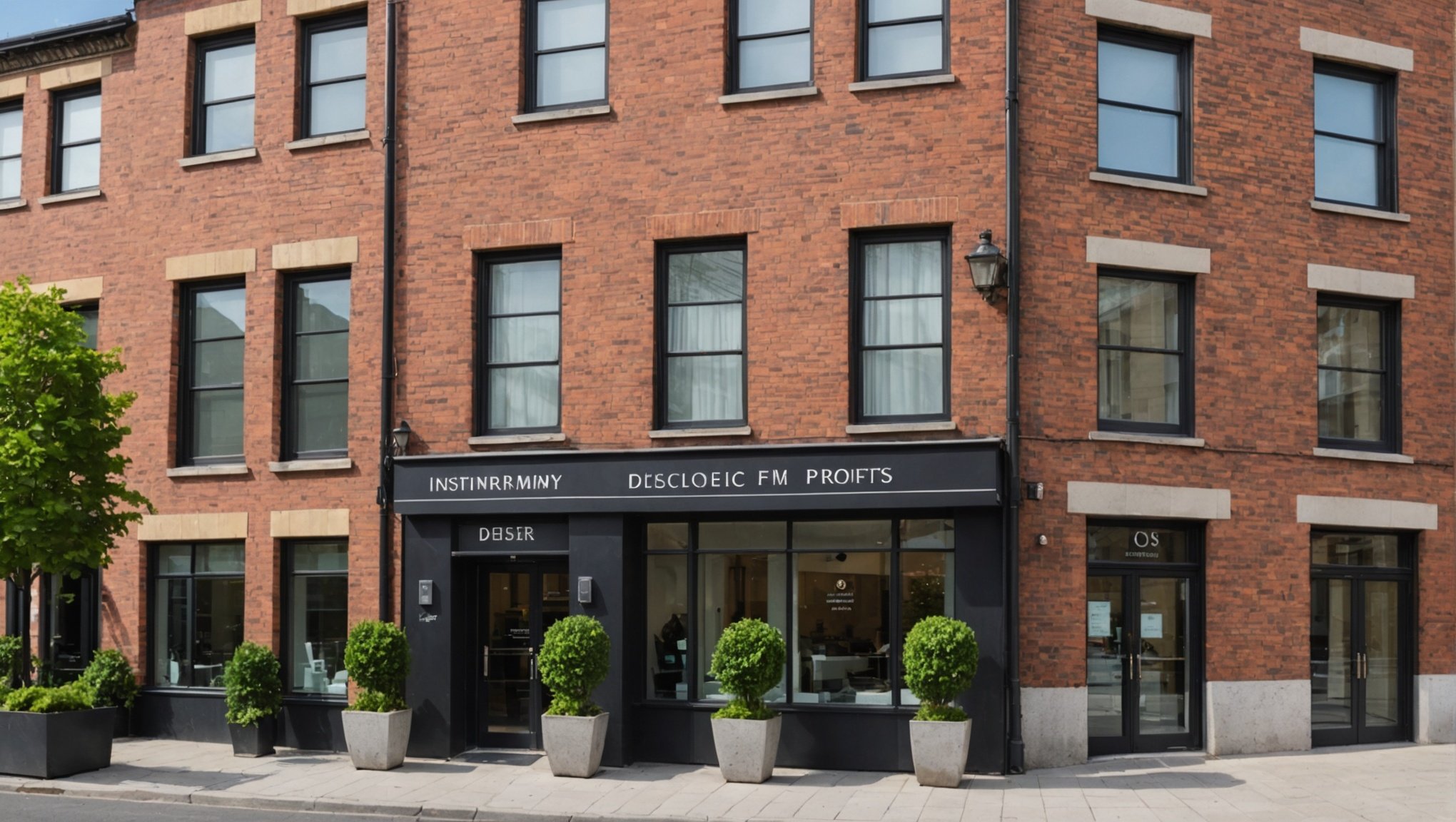Unlocking Profits: Discover the Financial Benefits of Investing in Energy-Efficient Commercial Properties: The Green Gold Rush in Commercial Real Estate
Imagine owning a commercial property that not only reduces your environmental footprint but also boosts your bottom line. This is the reality of investing in energy-efficient commercial properties, a sector that is increasingly attracting savvy investors. The integration of energy-efficient innovations, green financing, and strategic tax incentives can transform your real estate investments into highly profitable ventures.
Leveraging Tax Incentives for Energy-Efficient Properties
Tax incentives are a crucial component of the financial benefits associated with energy-efficient commercial properties. Here are some key incentives that can significantly impact your investment performance:
This might interest you : Exploring the Legal Considerations for Transforming Industrial Spaces into Homes in Birmingham: What You Need to Know
Federal Rebates and Local Grants
Tapping into federal rebates and local grants can provide substantial financial benefits. For instance, the Energy Efficient Commercial Buildings Deduction under Section 179D of the Internal Revenue Code offers a deduction of up to $5.65 per square foot for buildings placed in service in 2024, provided they meet specific energy efficiency standards[2].
Tax Deductions
Properties with green certifications, such as LEED or Energy Star, can qualify for significant tax deductions. These deductions are not limited to large corporations; even smaller investors can benefit from these savings. For example, if your property boasts energy-efficient features, you can claim these deductions to reduce your taxable income[1].
Additional reading : Essential Elements for Creating Senior-Friendly Urban Public Spaces: A Comprehensive Guide
Energy Credits
Energy credits, such as those offered under Section 45L for residential properties, can also be applied to commercial projects. These credits reward developers and investors for constructing energy-efficient buildings, with amounts ranging from $500 to $5,000 per home, depending on the energy efficiency standards met[2].
Property Assessments
A thorough property assessment can highlight all the eco-friendly features of your property, ensuring you get every penny of your potential savings. This process is vital in maximizing your tax benefits and can be conducted through cost segregation studies, which allow for the reclassification of certain property components to shorter depreciable lifespans[1][5].
Case Studies of Success: Real-World Examples
Success stories in energy-efficient commercial real estate are plentiful and inspiring. Here are a few examples that illustrate the potential profits:
The Bullitt Center in Seattle
Often hailed as the greenest commercial building in the world, the Bullitt Center is a prime example of how sustainable design can lead to substantial profits. This building features solar panels, a rooftop garden, and advanced energy-efficient systems, making it a highly desirable and valuable property[1].
A Revamped Warehouse in Portland
An old factory in Portland was transformed into a chic apartment building with solar panels and a rooftop garden. This transformation not only reduced utility bills but also attracted tenants who appreciated the eco-friendly features, leading to higher occupancy rates and increased property value[1].
An Eco-Friendly Shopping Oasis in Florida
A tired suburban strip mall was revamped into an eco-friendly shopping center, integrating energy-efficient measures such as solar panels and energy-efficient HVAC systems. This project not only reduced energy consumption but also attracted a wider market of eco-conscious consumers, resulting in higher returns for the investors[1].
Cost Segregation Studies: Accelerating Depreciation and Enhancing Cash Flow
Cost segregation studies are a powerful tool for real estate investors looking to maximize their financial benefits. Here’s how these studies can help:
Accelerated Depreciation
A cost segregation study allows for the reclassification of certain property components to shorter depreciable lifespans, typically five, seven, or fifteen years. This accelerates depreciation deductions, enabling investors to realize tax savings much earlier than the typical depreciation schedule would allow. For example, instead of depreciating a non-residential property over 39 years, certain components can be depreciated over five years, significantly increasing tax deductions in the early years of the investment[5].
Increased Cash Flow
By accelerating depreciation, investors can boost their current cash flow. This increased cash flow can then be reinvested back into the property for upgrades, expansions, or other projects that add value. Additionally, cost segregation studies can facilitate the claim of a disposition loss for assets that are no longer in service or are being upgraded[5].
Compliance and Audit Support
Cost segregation studies conducted by qualified professionals ensure compliance with IRS guidelines and methodologies. In the event of an IRS audit, the detailed documentation and analysis provided by these studies serve as valuable evidence to substantiate depreciation deductions, minimizing the risk of disputes and penalties[5].
Green Financing and Public-Private Investments
Green financing options and public-private investments are becoming increasingly important for energy-efficient commercial properties.
Green Loans and Incentives
Green loans and incentives can lower upfront costs and make eco-friendly investments more accessible. For instance, the Coalition for Green Capital (CGC) has announced $1.2 billion in prospective public-private investment to accelerate clean energy projects, including energy efficiency upgrades to commercial properties. This investment includes a $100 million line of credit to finance Commercial Property Assessed Clean Energy (C-PACE) loans, which can be refinanced in the capital markets, providing low-cost, long-term, non-recourse financing for energy efficiency upgrades[3].
Public-Private Partnerships
Public-private partnerships are crucial in driving significant investments in clean energy. The CGC, with seed funding from the EPA’s National Clean Investment Fund, aims to create a network of self-sustaining green banks to accelerate the construction of a clean power platform. These partnerships not only reduce emissions and cut energy costs but also pave the way for significant job creation and sustainable economic development[3].
Practical Insights and Actionable Advice
Here are some practical tips and actionable advice for investors looking to dive into energy-efficient commercial real estate:
Focus on Location
Location is key when it comes to energy-efficient commercial properties. Seek areas with a strong commitment to sustainability, as these neighborhoods often appreciate faster. For example, cities with green building initiatives and incentives can provide a higher return on investment[1].
Embrace Renewable Energy
Investing in properties with renewable energy solutions, such as solar panels, can reduce costs and appeal to a wider market. Solar panels, in particular, can power up your profits by reducing energy consumption and attracting eco-conscious tenants[1].
Research Green Certifications
Look for certifications like LEED or Energy Star, which not only boost your property’s value but also make you a hero in the eyes of eco-conscious buyers. These certifications ensure that your property meets stringent energy efficiency standards, which can lead to higher property value and rental income[1].
Table: Comparing Key Tax Incentives for Energy-Efficient Commercial Properties
| Incentive | Description | Eligibility | Benefits |
|---|---|---|---|
| Section 179D | Energy Efficient Commercial Buildings Deduction | Commercial buildings meeting specific energy efficiency standards | Deduction of up to $5.65 per square foot for buildings placed in service in 2024[2] |
| Section 45L | Tax credit for energy-efficient residential properties | Newly constructed or substantially renovated residential properties | Credit amount ranging from $500 to $5,000 per home, depending on energy efficiency standards[2] |
| Cost Segregation Studies | Accelerated depreciation through reclassification of property components | Non-residential and residential rental properties | Accelerated depreciation, increased cash flow, and compliance with IRS guidelines[5] |
| Green Financing | Low-cost, long-term, non-recourse financing for energy efficiency upgrades | Commercial properties eligible for C-PACE loans | Access to $1 billion in C-PACE financing, reducing upfront costs and increasing investment accessibility[3] |
Investing in energy-efficient commercial properties is not just a socially responsible decision; it is a financially savvy one. By leveraging tax incentives, green financing options, and cost segregation studies, you can unlock substantial profits and enhance your real estate investment performance.
As Reed Hundt, CEO of the Coalition for Green Capital, noted, “These investments are intended to lead to investments that will accelerate the transition from carbon to clean cheaply, quickly and inclusively, by, for and with communities.”[3]
In conclusion, the future of commercial real estate is green, and the financial benefits are undeniable. Whether you are a seasoned investor or just starting out, diving into the world of energy-efficient commercial properties can be a lucrative and sustainable choice.
Final Tips for Investors
- Stay Informed: Keep up-to-date with the latest tax incentives and green financing options available in the market.
- Consult Experts: Work with professionals who specialize in cost segregation studies and green certifications to ensure you maximize your financial benefits.
- Focus on Sustainability: Invest in properties that not only reduce energy consumption but also contribute to long-term sustainability and environmental benefits.
By following these tips and leveraging the financial benefits outlined above, you can join the green gold rush and transform your real estate investments into highly profitable and sustainable ventures.











